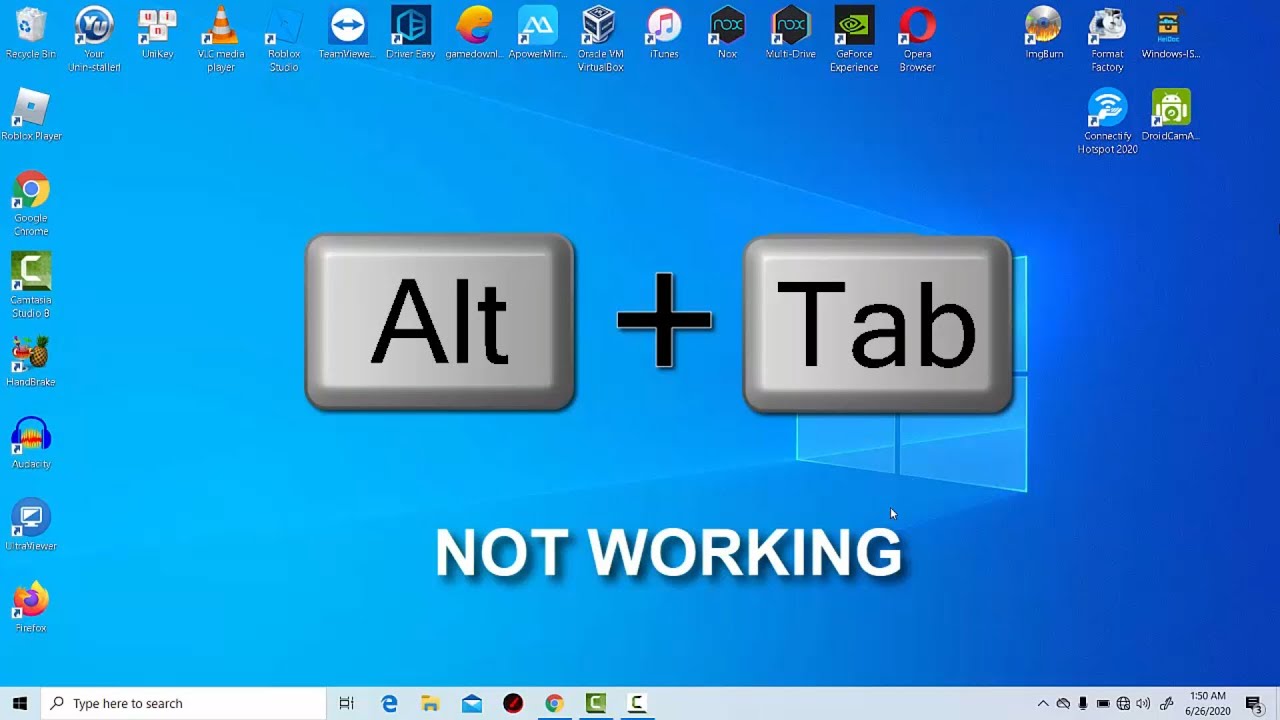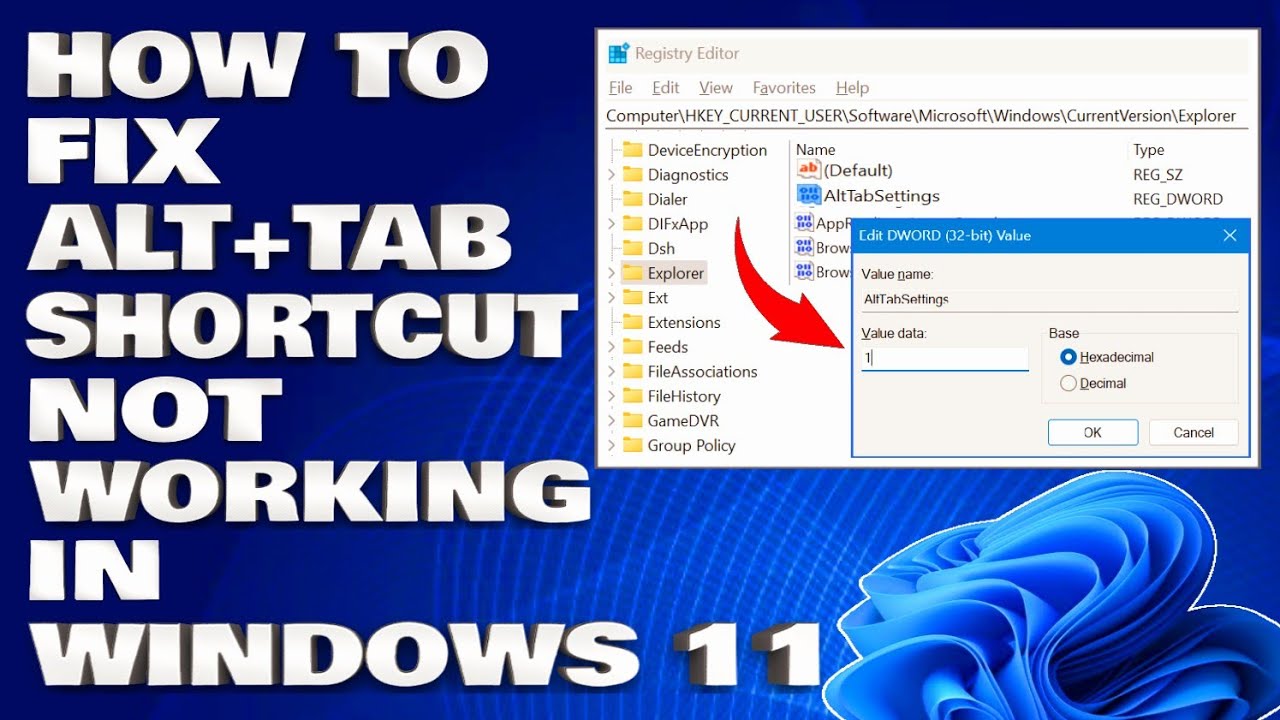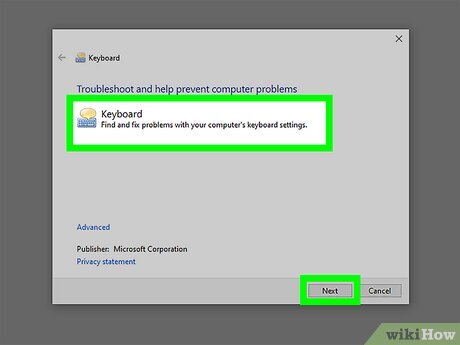4 Ways to Fix Alt-Tab Issues

Have you ever encountered frustrating moments where your Alt-Tab functionality stops working as expected? It's a common problem that can disrupt your workflow and cause inconvenience, especially when you rely on multitasking between multiple applications. Alt-Tab, a simple yet powerful tool, allows users to quickly switch between open windows or virtual desktops, enhancing productivity. However, when this feature malfunctions, it can lead to confusion and frustration. In this comprehensive guide, we will explore the causes behind Alt-Tab issues and provide effective solutions to help you regain control over your multitasking experience.
Understanding Alt-Tab Issues

Before diving into the solutions, it’s essential to understand the potential causes of Alt-Tab problems. These issues can arise due to various factors, including:
- Software Conflicts: Alt-Tab functionality is often managed by the operating system and specific software applications. Conflicts between these components can disrupt the seamless switching between windows.
- Outdated Software: Running outdated operating systems or applications can lead to compatibility issues and Alt-Tab malfunctions.
- Hardware Limitations: In some cases, hardware-related factors, such as outdated or malfunctioning graphics drivers, can impact the smooth operation of Alt-Tab.
- Resource Intensive Tasks: When your system is engaged in resource-heavy processes, it may affect the responsiveness of Alt-Tab, causing delays or freezes.
Method 1: Restart Your Computer

The simplest yet often effective solution is to restart your computer. A fresh start can resolve temporary glitches and conflicts that may be causing Alt-Tab issues. Here’s how to do it:
- Click on the Start menu (Windows logo) located in the bottom-left corner of your screen.
- Select Power from the options and choose Restart.
- Wait for your computer to restart and log back in.
- Try using Alt-Tab to see if the problem persists.
Pro Tip: Use Task Manager
If you’re unable to access the Start menu or encounter an unresponsive system, you can force restart your computer using the Task Manager. Press Ctrl + Shift + Esc to open the Task Manager. Navigate to the File menu and select Run new task. Type shutdown /r /t 0 into the text box and click OK. This will immediately restart your computer.
Method 2: Update Your Operating System and Applications
Outdated software can often lead to compatibility issues and glitches. By keeping your operating system and applications up-to-date, you can ensure optimal performance and minimize the chances of Alt-Tab problems.
Update Your Operating System
Regularly check for operating system updates. Here’s how to update Windows 10:
- Open the Settings app by pressing Windows + I or searching for it in the Start menu.
- Navigate to Update & Security and select Windows Update.
- Click on Check for updates and install any available updates.
- Restart your computer for the changes to take effect.
Update Your Applications
Keep your applications updated as well. Here’s a general guide on updating software:
- Open the application and look for an Update, Settings, or Preferences menu.
- Check for available updates and follow the instructions to install them.
- If the application doesn't offer an update feature, visit the developer's website for the latest version.
Method 3: Adjust Alt-Tab Settings
Windows offers various Alt-Tab settings that you can customize to your preferences. By adjusting these settings, you might be able to resolve Alt-Tab issues. Here’s how to access and adjust Alt-Tab settings:
- Right-click on the Start menu and select Settings.
- Navigate to System and select Multitasking.
- Under Switch between open apps, you'll find options to customize Alt-Tab behavior.
- Experiment with different settings, such as Show taskbar buttons or Show windows stacked, to find the configuration that works best for you.
Customizing Alt-Tab Behavior
Here are some specific settings you can try to enhance your Alt-Tab experience:
- Show taskbar buttons: Enabling this setting displays the taskbar buttons when using Alt-Tab, making it easier to identify and switch to the desired window.
- Show windows stacked: This option displays windows in a stacked layout, allowing you to preview each open window as you navigate through them using Alt-Tab.
- Show windows from other desktops: Enabling this setting allows you to switch between windows on different virtual desktops using Alt-Tab.
Method 4: Check Your Hardware and Drivers

Hardware-related issues, especially outdated or malfunctioning graphics drivers, can impact the smooth operation of Alt-Tab. Here’s how to update your graphics drivers:
- Press Windows + X and select Device Manager from the menu.
- Expand the Display adapters section.
- Right-click on your graphics driver and select Update driver.
- Choose Search automatically for drivers and follow the instructions to install the latest updates.
Troubleshooting Hardware Issues
If updating your graphics drivers doesn’t resolve the issue, consider the following steps:
- Roll Back Drivers: If a recent driver update caused Alt-Tab problems, you can roll back to a previous version. Right-click on your graphics driver, select Properties, navigate to the Driver tab, and click Roll Back Driver.
- Reinstall Drivers: In some cases, reinstalling the drivers can resolve issues. Download the latest drivers from the manufacturer's website and install them manually.
- Check Hardware Compatibility: Ensure that your hardware, especially your graphics card, is compatible with your operating system and applications. Consult the manufacturer's website for compatibility information.
Conclusion: Regaining Control Over Your Multitasking Experience
Alt-Tab issues can be frustrating, but with the right approach, they can be resolved effectively. By following the methods outlined in this guide, you can troubleshoot and fix Alt-Tab problems, ensuring a seamless multitasking experience. Remember to regularly update your operating system and applications, adjust Alt-Tab settings to your preferences, and keep your hardware and drivers up-to-date. With these practices, you’ll be able to switch between windows effortlessly and boost your productivity.
FAQ
Why is Alt-Tab not working at all on my computer?
+Alt-Tab issues can be caused by various factors, including software conflicts, outdated software, or hardware limitations. Try restarting your computer, updating your operating system and applications, adjusting Alt-Tab settings, and checking your hardware and drivers. If the problem persists, consider seeking further technical assistance.
Can I customize the appearance of Alt-Tab windows?
+Yes, you can customize the appearance of Alt-Tab windows by adjusting the settings in the Multitasking section of the Settings app. You can choose options like Show taskbar buttons or Show windows stacked to change the layout and preview of open windows.
Is it possible to disable Alt-Tab completely?
+While it’s not recommended to disable Alt-Tab completely, you can restrict its functionality by disabling specific features. For example, you can turn off Show windows from other desktops if you don’t want to switch between windows on different virtual desktops.


